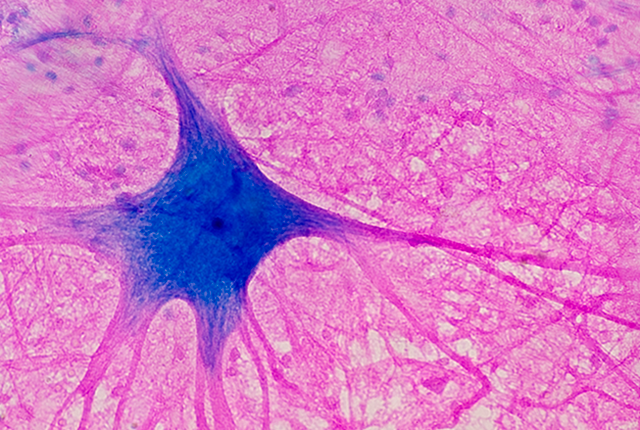
Scientists unravel mystery of uneven aging in the body
By measuring gene expression in short- and long-lived cells, the research team answered an intriguing question.Media Contact: Chris Talbott - 206-543-7129, talbottc@uw.edu
Species and individuals age at different rates. Even within a single body, organs and biological systems age at different speeds. While this phenomenon is well-known, surprisingly little research has been done to explain why it happens, an important question that can help explain why some live beyond 100 and others die in their 30s and 40s.
Multiple complicated hypotheses attempt to spell out these differences in the rate of accumulated variation in gene expression across parts of the body. A team at the University of Washington School of Medicine has instead found a simple explanation: Cells decide themselves.
“Within each of us, there are parts of us that seem to age faster than others,” said Daniel Promislow, a professor of laboratory medicine and pathology, and of biology. “My hair fell out when I was in my late 20s. And yet I still run at 59. And yet there are people my age who unfortunately can’t run because of osteoarthritis. So different parts of our bodies are falling apart at different rates. And that's what this is about: Trying to understand why is it that some things seem to age faster than others within an individual?”
The researchers in Promislow’s lab also found that, in analyzing data from mouse cells, those cells that live longer do a better job of producing and maintaining proteins necessary for healthy function. The team has now developed a heuristic model intended to help scientists further their understanding of the processes.
A paper detailing the discoveries appeared Nov. 16 in Genome Research. The work was led by Ming Yang, a postdoctoral researcher, and senior scientist Benjamin R. Harrison. The hope is that the model can begin to answer questions that have long intrigued researchers about aging.
As with human cells, mice cells have an amazing range of lifespans. Neurons in the brain may never be replaced, living as long as the organism, while some cells in the blood and gut only live a day or two. All these cells contain thousands of genes, and how those genes are expressed determines what kind of cell it is and how long it lives.
The team used single-cell sequencing data to show that, as mice age, variation in patterns of gene expression in long-lived cells tends to increase—a sign of aging that suggests some loss of control in how those cells are regulated.
Gene expression variation in short-lived cells, on the other hand, appears unchanged as mice grow older.
Promislow, who studies natural variation in aging and who leads the Dog Aging Project, said we might think of each gene as a water spigot.
“We find that for some cell types, those spigots are turned on identically across all the cells,” he said. “Whereas in other cell types, some are on a little more and some are on less, from cell to cell. And if we measure that variation for each gene across a number of cells of the same type, we can obtain a measure of how variable the functional genome is for that particular kind of cell.
“We find that for some cell types, that variation increases as the animal ages. And for other cell types, it doesn't seem to increase,” he said.
The reason lies in individual cellular ages. Cells that turn over very slowly or not at all, like brain neurons, will have cellular ages similar to the organism’s age. Cells that turn over quickly stay relatively young throughout the life of the organism, because new cells are created every day. The mix of cellular ages across cell types explains why changes of variation in gene expression occur at different times as the organism ages.
Further, by selectively removing rapid-turnover cells that are unfit, an organism can ensure its population of short-lived and rapidly aging cells remains healthy, no matter the age of the organism.
Long-lived cells have little opportunity for turnover, so they compensate by switching on genes that govern cellular maintenance. They set in motion a sort of sanitation service to clean up proteins that have degraded over time – something those short-lived cells don’t need to do. They also appear to produce robust proteins that are sturdier than those produced by quick-turnover cells. These instead express proteins that are perhaps evolved for higher activity, but are likely to misfold and nultimately cause problems for the cell.
“As we're developing technology to make organisms live healthier for longer, this work might help us understand not only how to do it, but also what the costs and benefits of doing it might be,” Promislow said. “As researchers search for drugs that can increase lifespan, this work underscores that there are likely to be unintended costs as well as benefits.”
The work was funded through an Impetus Grant.
For details about UW Medicine, please visit https://uwmedicine.org/about.
